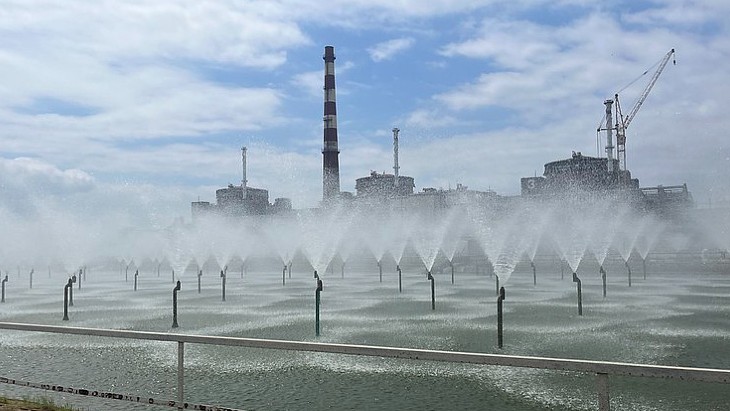In his latest update on the situation at the plant, which has been under Russian military control since early March 2022, IAEA Director General Rafael Mariano Grossi said: "After repeated requests in recent months, we were at last able to go to one more reactor rooftop. While this is a step in the right direction, we still need more access to assess adherence to the five principles, which were presented and gained support at the United Nations Security Council. We will continue to insist until this is granted."
A previous rotation of IAEA staff had access to the rooftops of units 3 and 4 in early August after reports that explosives may have been placed on them - they did not see any explosives or mines. Grossi said that, during the visit this week to the roof of unit 2, those taking part were able to see "parts of the rooftops of units 1 and 3, without seeing any mines or explosives". Last week the IAEA said it wanted to have access to rooftops and to the turbine halls of all six units, "one after the other".
The IAEA's UN-agreed principles for safety and security at Zaporizhzhia include it not being used as a base for attacks or for storage of heavy weapons, and also that it should not be subject to attacks. The request for access to the turbine halls is "to confirm the absence of any materials and equipment that may contravene the five principles - this request has not yet been approved and the IAEA team can only confirm the status of one turbine hall at a time".
Five of the six units at Zaporizhzhia are in cold shutdown, with unit 4 in 'hot' shutdown, where it can "generate steam to heat water for the nearby town of Energodar - where most plant staff live - and to process liquid radioactive waste". The State Nuclear Regulatory Inspectorate of Ukraine has issued regulatory orders that all six units should be in cold shutdown and the IAEA says it has been urging the plant's operators to find an alternative source of steam generation.
Maintenance is taking place at unit 6 following its transition to cold shutdown last week, with "testing on two of the unit’s steam generators due to the presence of boron in the secondary circuit, which is an indicator of a leak, albeit much smaller than that found in one of the steam generators of unit 4, which was subsequently repaired. In unit 6, the tests performed by the ZNPP identified small water leaks in one tube of each steam generator, which have now been repaired and testing is being performed to confirm the successful repair".
The IAEA team stationed at the plant, which is on the frontline between Russian and Ukrainian troops, continue to report hearing explosions on a daily basis, normally some distance from the plant, but with four blasts closer to the site heard on Tuesday. They are also looking at staffing levels and training and licensing of staff at the plant.
Since the destruction of the Kakhovka dam in early June there has been concern about the supply of cooling water to the plant and a number of wells have been dug to ensure there is enough supply. Eleven underground wells have now been completed, which together provide about 250 cubic metres of water per hour, which the IAEA says the plant operators believe will be enough to maintain the level of the 12 sprinkler cooling ponds.





_30199.jpg)
_72306.jpg)

_49562.jpg)





